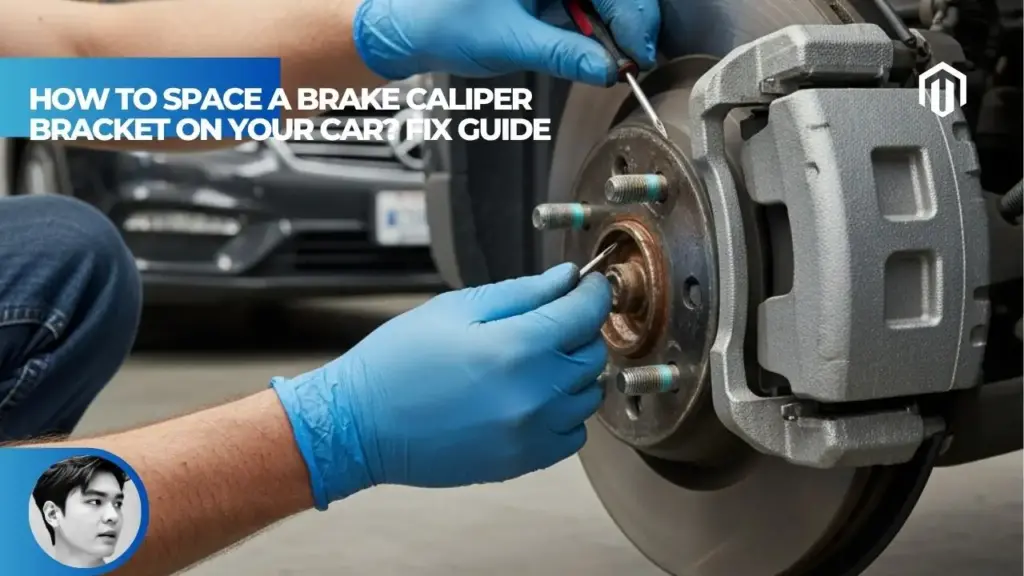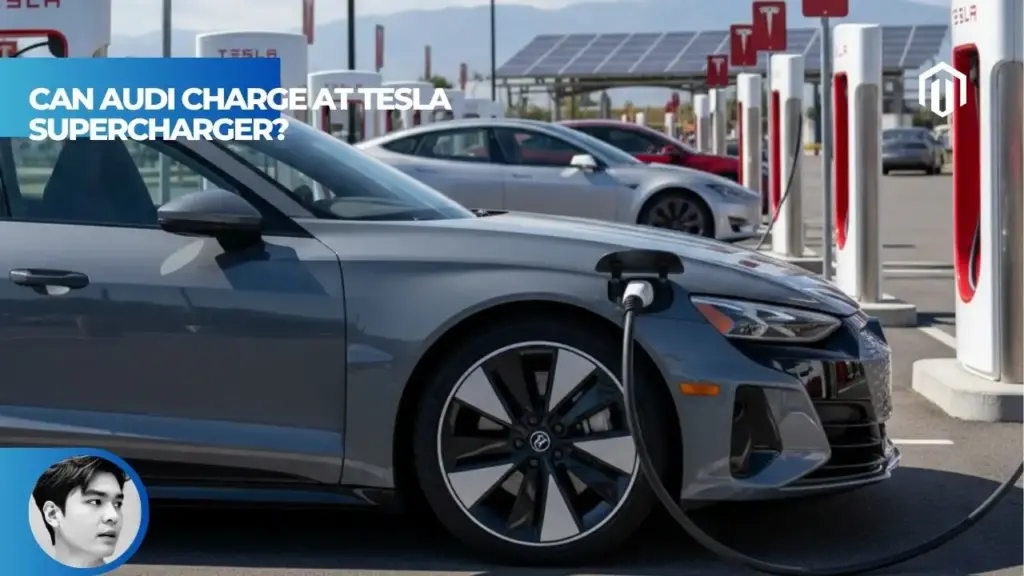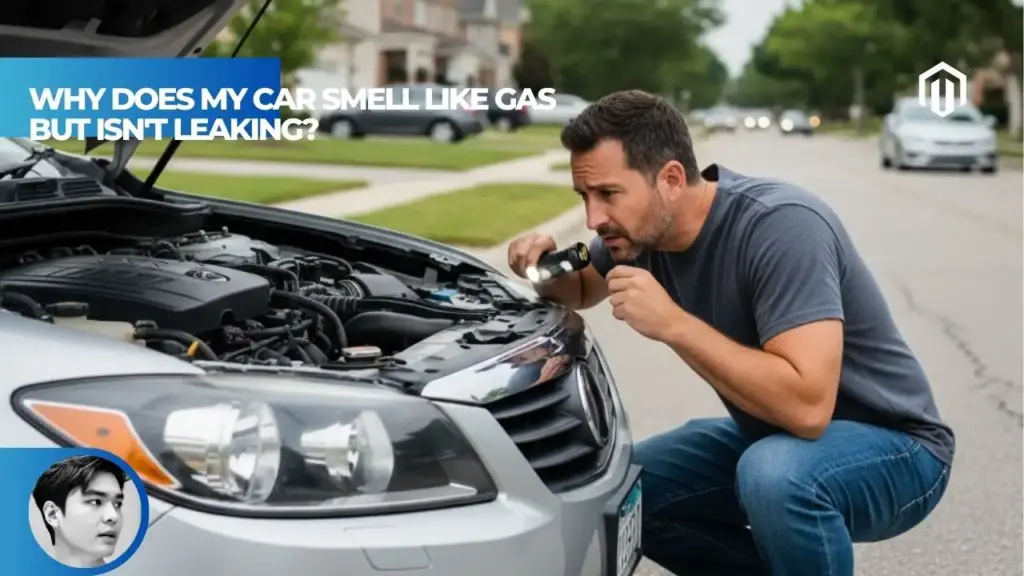You may also like:
- 【Explained】What Engine Does the BMW i8 Have? Full Hybrid Powertrain Explained
- 【Explained】What Did BMW Start Making Before Cars? (From Planes to Cars)
- 【Explained】What Type Wrenches Are Used on BMW Engine? A Full Mechanic’s Guide
- 【Explained】What Type of Gas Do BMW Take? Premium Fuel, Octane, and Knocking Explained
- 【Explained】What Is the Difference Between a BMW X3 and X5? (A 2025 Buyer’s Guide)
The BMW M4 is powered by a 3.0-liter twin-turbocharged inline-six engine, featuring two distinct generations: the S55 engine (2014-2020) producing 425-493 horsepower, and the current S58 engine (2020-present) generating 473-543 horsepower. Both engines utilize BMW’s M TwinPower Turbo technology, with the S58 incorporating a stronger closed-deck block design for improved reliability and performance.
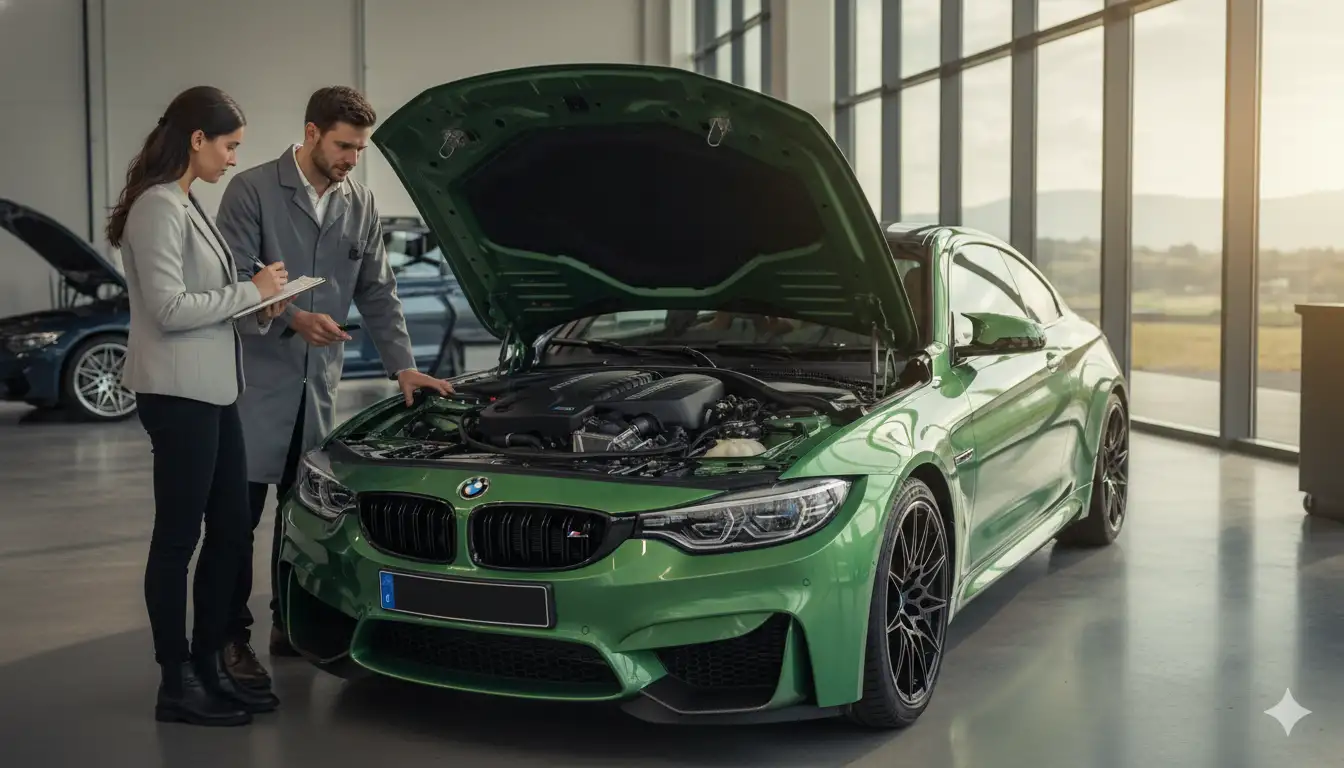
What Engine Does a BMW M4 Have – Direct Answer
Understanding the BMW M4’s powerplant requires examining two generations of sophisticated inline-six engines that have defined modern M performance.
BMW M4 Engine S58 (Current Generation)
The S58 engine represents BMW M’s latest evolution in inline-six technology, powering all G82 generation M4 models from 2020 onwards. This 3.0-liter twin-turbocharged powerhouse produces between 473 and 543 horsepower depending on the variant[1]. The S58 features forged internals including a chrome-molybdenum heat-treated steel crankshaft, forged steel connecting rods, and forged aluminum pistons with Mahle’s proprietary anti-friction coating.
The engine’s closed-deck block design significantly improves structural rigidity compared to its predecessor, allowing for higher combustion pressures and greater tuning potential. According to Autvex performance experts, the S58’s architecture makes it one of the most robust M engines ever produced.
BMW M4 Engine S55 (First Generation)
The S55 engine launched with the F82 M4 in 2014, marking BMW’s return to turbocharged inline-six power for M cars. Producing 425 horsepower in standard form and up to 493 horsepower in the limited-edition M4 GTS[2], the S55 established the template for modern M performance. This engine featured an open-deck block design and a two-piece crank hub that would later be improved in the S58.
Despite some reliability concerns, particularly with early production models, the S55 proved itself as a capable performance engine that could handle significant power increases through tuning.
M4 Inline Six Twin Turbo Configuration
Both M4 engines employ a twin-turbo configuration using two mono-scroll turbochargers, positioned in a hot-vee layout within the cylinder banks. This design minimizes turbo lag while maximizing responsiveness across the rev range. The turbochargers in the S58 are larger than those in the S55, contributing to its increased power output.
The twin-turbo setup allows for precise boost control, with the S58 running up to 30.5 psi in CSL trim compared to the S55’s maximum of 21.8 psi in GTS specification.
BMW M TwinPower Turbo 3.0-Liter Specifications
BMW’s M TwinPower Turbo technology encompasses several advanced features:
- Direct fuel injection at pressures up to 350 bar
- Double-VANOS variable camshaft timing
- Valvetronic variable valve lift
- Twin mono-scroll turbochargers
- Bore x Stroke: 84mm x 90mm (S58) vs 84mm x 89.6mm (S55)
- Compression ratio: 9.3:1 (S58) vs 10.2:1 (S55)
Generation and Model Year Engine Details
The transition between M4 generations marked significant technological advancement in BMW’s M division engineering.
M4 F82 Engine Code (2014-2020)
The F82 generation M4 exclusively used the S55B30 engine throughout its production run. Initial 2014-2015 models produced 425 horsepower and 406 lb-ft of torque[3]. The 2016 Competition Package increased output to 444 horsepower through revised engine mapping and a sports exhaust system.
Notable F82 variants included the track-focused M4 GTS with water injection technology boosting power to 493 horsepower, making it the most powerful S55 application.
M4 G82 Engine Code (2020-Present)
The G82 M4 introduced the S58B30 engine with substantial improvements over its predecessor. Standard models generate 473 horsepower at 6,250 rpm and 406 lb-ft from 2,650-6,130 rpm[1]. The closed-deck block construction and single-piece forged crankshaft address the S55’s known weaknesses.
BMW’s commitment to continuous improvement shows in the S58’s refined cooling system, featuring an additional radiator and improved oil cooling capacity for sustained high-performance driving.
When Did the M4 Switch from S55 to S58
The transition occurred with the 2021 model year when BMW launched the G82 generation M4. The final F82 M4s rolled off the production line in mid-2020, with the new G82 arriving at dealerships in March 2021. This generational change represented more than just an engine swap, introducing BMW’s latest chassis technology and design philosophy.
The overlap period saw some markets receiving final F82 models while others had already transitioned to G82 production.
Displacement of BMW M4 Engine
Both the S55 and S58 maintain a 2,993cc displacement, achieved through different bore and stroke combinations. The S58’s slightly longer stroke (90mm vs 89.6mm) contributes to its improved torque characteristics. This consistent displacement allows BMW to meet various global regulations while maintaining the traditional 3.0-liter classification.
Interestingly, the S58 actually has a slightly smaller displacement (2,993cc) compared to the B58’s 2,998cc, optimized specifically for high-performance applications.
Performance Specifications and Power Output
The M4’s power evolution reflects BMW M’s engineering prowess and response to market demands.
M4 Engine Horsepower and Torque
Current M4 engine outputs vary significantly by model:
| Model | Engine | Horsepower | Torque | 0-60 mph |
|---|---|---|---|---|
| M4 (Base) | S58 | 473 hp | 406 lb-ft | 4.1 sec |
| M4 Competition | S58 | 503 hp | 479 lb-ft | 3.8 sec |
| M4 Competition xDrive | S58 | 503 hp | 479 lb-ft | 3.4 sec |
| M4 CS | S58 | 543 hp | 479 lb-ft | 3.6 sec |
| M4 CSL | S58 | 543 hp | 479 lb-ft | 3.6 sec |
2024 BMW M4 Competition Engine
The 2024 M4 Competition’s S58 engine produces 503 horsepower and 479 lb-ft of torque, with peak torque available from 2,750 to 5,500 rpm[1]. When equipped with BMW’s xDrive all-wheel-drive system, acceleration to 60 mph drops to just 3.4 seconds.
The Competition model includes an upgraded cooling system, reinforced engine mounts, and specific ECU calibration for enhanced throttle response and more aggressive power delivery.
M4 CS and CSL Engine Specs
The limited-production M4 CSL represents the S58’s ultimate expression, producing 543 horsepower at 6,250 rpm[4]. Boost pressure increases to 30.5 psi, up from the Competition’s 24.7 psi. The CSL’s titanium exhaust system saves 9 pounds while producing a distinctive sound signature.
BMW achieved this power increase through model-specific engine management tweaks, increased charge pressure, and optimized intake and exhaust flow paths.
M4 Competition Package Horsepower
The Competition Package evolution shows BMW’s progressive power strategy:
- F82 Competition Package (2016-2020): 444 hp, 406 lb-ft
- G82 M4 Competition (2021+): 503 hp, 479 lb-ft
- Power increase generation-to-generation: 59 hp (13.3%)
This substantial jump reflects the S58’s superior architecture and BMW’s confidence in the engine’s durability.
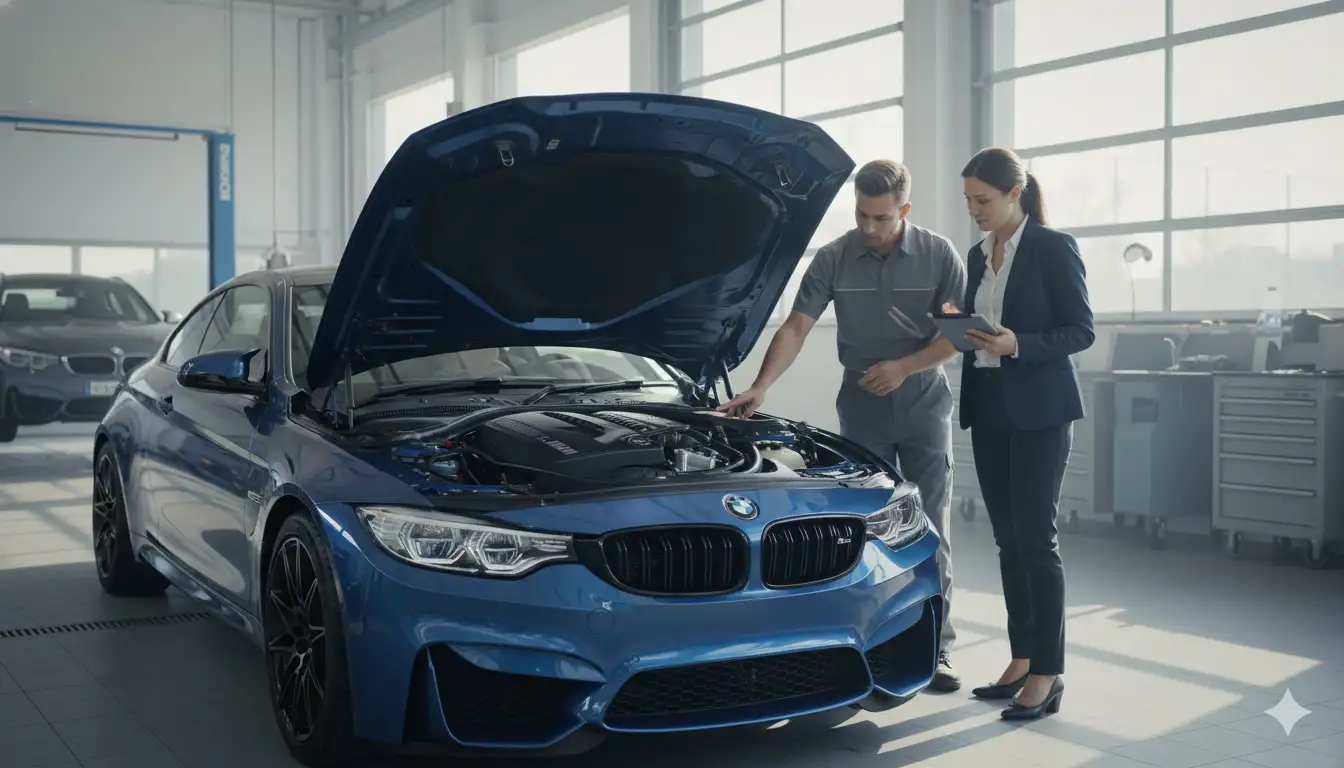
Technical Features and Engine Architecture
The engineering details reveal why these engines deliver such impressive performance.
Single vs Twin Turbo M4 Engine
All M4 models use twin-turbo configurations, never single turbos. The dual turbocharger setup provides several advantages:
- Reduced turbo lag through smaller, faster-spooling turbos
- Better heat management with distributed thermal load
- More precise boost control across the rev range
- Improved packaging within the engine bay
Each turbo handles three cylinders, ensuring balanced exhaust pulse delivery and optimal efficiency.
Closed Deck Block S58
The S58’s closed-deck block design represents a significant upgrade from the S55’s open-deck construction[2]. This architecture provides:
- 50% greater rigidity at cylinder walls
- Support for higher combustion pressures
- Improved head gasket sealing
- Better thermal management
- Enhanced durability under extreme conditions
According to Autvex engineering analysis, this design change alone accounts for much of the S58’s improved reliability and tuning potential.
M4 Water Injection System (GTS)
The limited-edition F82 M4 GTS pioneered BMW’s water injection system, borrowed from their M motorsport program. This system injects a fine water mist into the intake plenum, reducing intake air temperature by up to 25°C. Benefits included:
- 68 hp power increase over standard S55
- Reduced knock tendency
- Ability to run more aggressive timing
- Lower emissions under full load
While not carried forward to the S58, this technology demonstrated BMW’s willingness to implement racing solutions in road cars.
What Is the Redline of the S58 Engine
The S58 engine redlines at 7,200 rpm with the limiter set at 7,300 rpm[1]. This represents a 200 rpm increase over the S55’s 7,000 rpm redline. The higher rev ceiling showcases the S58’s robust bottom-end construction and improved valvetrain dynamics.
The engine maintains strong power delivery up to redline, unlike many turbocharged engines that taper off significantly before the limiter.
Engine Comparison and Differences
Understanding how the M4’s engines compare reveals their unique characteristics and capabilities.
S55 vs S58 Reliability
Reliability comparisons strongly favor the S58:
S55 Known Issues:
- Three-piece crank hub failures (pre-2016)
- Rod bearing wear on high-mileage examples
- Valve cover gasket leaks after 40,000 miles
- Charge pipe failures under increased boost
S58 Improvements:
- Single-piece forged crankshaft eliminates hub issues
- Improved rod bearing materials and oil flow
- Enhanced gasket designs
- Reinforced charge pipes from factory
BMW addressed virtually every S55 weakness in the S58 design[2].
S55 vs S58 Tuning Potential
Both engines respond well to modifications, but the S58’s stronger internals provide greater headroom:
| Modification Level | S55 Safe Power | S58 Safe Power |
|---|---|---|
| Stage 1 (Tune Only) | 500-520 hp | 550-570 hp |
| Stage 2 (Downpipes + Tune) | 550-600 hp | 630-680 hp |
| Stock Turbos Maximum | 650 hp | 750 hp |
| Built Engine Potential | 800+ hp | 1000+ hp |
The S58 can reliably handle 600-700 horsepower on stock internals[3], while S55 owners typically recommend upgrading internals beyond 600 horsepower.
B58 vs S58 Engine Difference
While both share BMW’s modular architecture, key differences separate these engines:
S58 Advantages:
- Forged internals vs cast in B58
- Closed-deck block vs open-deck
- Twin-turbo vs single twin-scroll turbo
- 9.3:1 vs 11.0:1 compression ratio
- 7,200 rpm vs 6,500 rpm redline
The S58 is purpose-built for extreme performance, while the B58 powers regular BMW models with efficiency priorities.
M4 Engine Compared to M2
The relationship between M4 and M2 engines evolved across generations:
- 2016-2018 M2 (N55): Single-turbo 3.0L, 365 hp
- 2019-2021 M2 Competition (S55): Detuned M4 engine, 405 hp
- 2023+ M2 (S58): Detuned current M4 engine, 453 hp
The M2 consistently receives slightly detuned versions of M3/M4 engines, maintaining hierarchy while delivering exceptional performance.
Related M Models Engine Comparison
The M4’s engine shares DNA with several BMW M vehicles.
Is the M4 Engine the Same as M3?
Yes, the M4 and M3 use identical engines in each generation. The G80 M3 sedan and G82 M4 coupe both employ the S58 with matching power outputs across equivalent trim levels. The only differences lie in exhaust tuning for slightly different sound characteristics.
This engine sharing allows BMW to amortize development costs while maintaining consistent performance across body styles.
What Engine Is in the X3 M?
The X3 M uses the same S58 engine as the current M4, tuned to produce 473 hp in standard form and 503 hp in Competition specification[5]. The SUV application includes additional cooling capacity and modified engine mounts to handle the increased vehicle weight.
Despite weighing 600 pounds more than an M4, the X3 M Competition achieves 0-60 mph in just 3.7 seconds thanks to standard all-wheel drive.
M4 Engine Compared to the Non-M 440i
The 440i uses BMW’s B58 single twin-scroll turbo engine producing 382 horsepower. Key differences from the M4’s S58:
- 121-161 hp less power (depending on M4 variant)
- Cast internals vs forged
- Single turbo vs twin-turbo
- Open-deck vs closed-deck block
- $25,000+ price difference
While the 440i offers impressive performance for everyday driving, it lacks the M4’s racing-derived engineering.
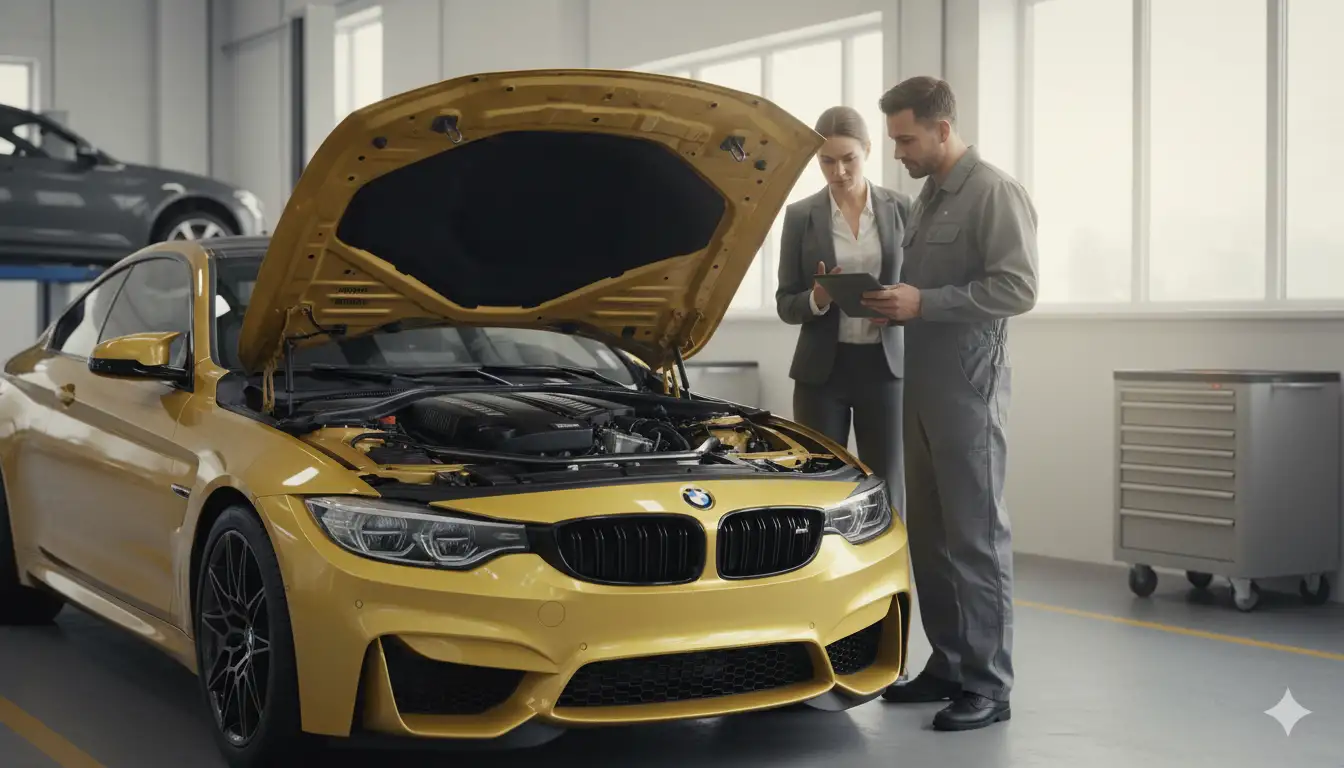
Key Takeaway
The BMW M4 is powered by a 3.0-liter twin-turbocharged inline-six engine – the S55 (2014-2020) producing 425-493 hp, and the current S58 (2020+) producing 473-543 hp depending on variant. Both engines feature M TwinPower Turbo technology with the S58 offering improved reliability and a closed-deck block design.
Key Points:
- S58 engine (2020+) produces up to 543 hp in CSL trim
- Closed-deck block design improves reliability over S55
- Twin mono-scroll turbochargers minimize lag
- S58 can handle 600-700 hp on stock internals
- Same engine powers M3, X3 M, and X4 M
- 7,200 rpm redline showcases high-rev capability
- Forged internals standard on all S58 engines
Next Steps
Research specific M4 variants (Competition, CS, CSL) to understand power differences and determine which suits your driving needs. Consider S58-equipped models (2021+) for better reliability and tuning potential compared to S55 models. Verify maintenance history on S55 models, particularly checking for crank hub updates and rod bearing inspections.
For prospective buyers, test drive both manual and automatic transmissions to determine preference. Budget for premium fuel and higher insurance costs associated with M car ownership. Join BMW M forums and local car clubs to connect with other owners and learn about common modifications and maintenance practices. Consider certified pre-owned options for warranty coverage on used models.
Frequently Asked Questions
What is the main difference between the S55 and S58 engines?
The S58 features a closed-deck block for increased strength, produces more power (473+ hp vs 425+ hp), and has improved reliability over the S55.
Does the BMW M4 engine have known reliability issues?
The S55 had some rod bearing concerns in early models, while the S58 has proven more reliable with its strengthened closed-deck design.
How much horsepower can a stock S58 engine handle with tuning?
The S58 can reliably handle 600-700 hp with bolt-on modifications and proper tuning on stock internals.
Is the current M4 engine based on the B58?
Yes, the S58 is the high-performance M division variant of the B58, featuring stronger internals and twin turbos.
Did the first generation M4 (F82) use a single or twin-turbo setup?
The F82 M4 used a twin-turbo setup with two mono-scroll turbochargers in the S55 engine.
Why did BMW stop using the V8 engine in the M4’s predecessor (M3 E92)?
BMW switched to turbo inline-six for better efficiency, lower emissions, and comparable power with less displacement.
What is the stock horsepower of the BMW M4 Competition?
The current M4 Competition produces 503 horsepower from its S58 engine.
Does the M4 CSL use the same engine as the standard M4?
Yes, but the CSL’s S58 is tuned to produce 543 hp, the highest output in any production M4.
What is the redline of the S58 engine?
The S58 engine has a redline of 7,200 rpm with the rev limiter set at 7,300 rpm.
References
- Car and Driver. (2024). 2025 BMW M4 Review, Pricing, and Specs. https://www.caranddriver.com/bmw/m4
- BMW Tuning. (2024). BMW S55 vs S58: Performance, Reliability & Tuning. https://bmwtuning.co/s55-vs-s58/
- CarBuzz. (2024). Straight-Six Perfection: Unpacking The BMW M4’s Potent Engine. https://carbuzz.com/straight-six-perfection-unpacking-the-bmw-m4s-potent-engine/
- BMW M. (2023). BMW M4 CSL Technical Specifications. https://www.bmw-m.com/en/all-models/overview-m-and-m-performance/bmw-m4-csl/2022/bmw-m4-csl.html
- BMW Group Press. (2022). The new BMW M4 CSL. https://www.press.bmwgroup.com/united-kingdom/article/detail/T0392113EN_GB/

I am a senior automotive analyst at Autvex. Expert vehicle evaluations, in-depth reviews, and objective analysis helping readers make informed automotive decisions with years of industry experience.




